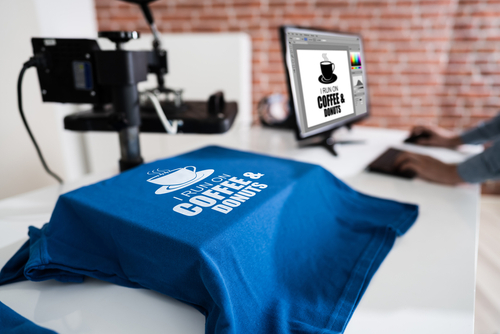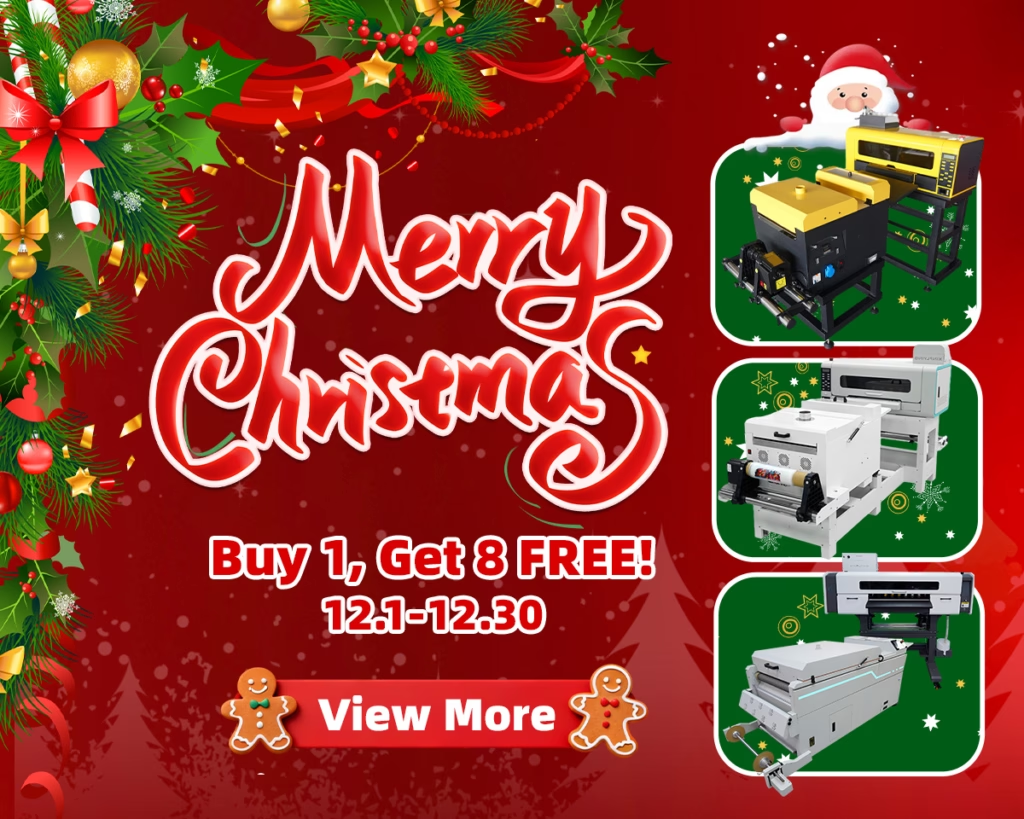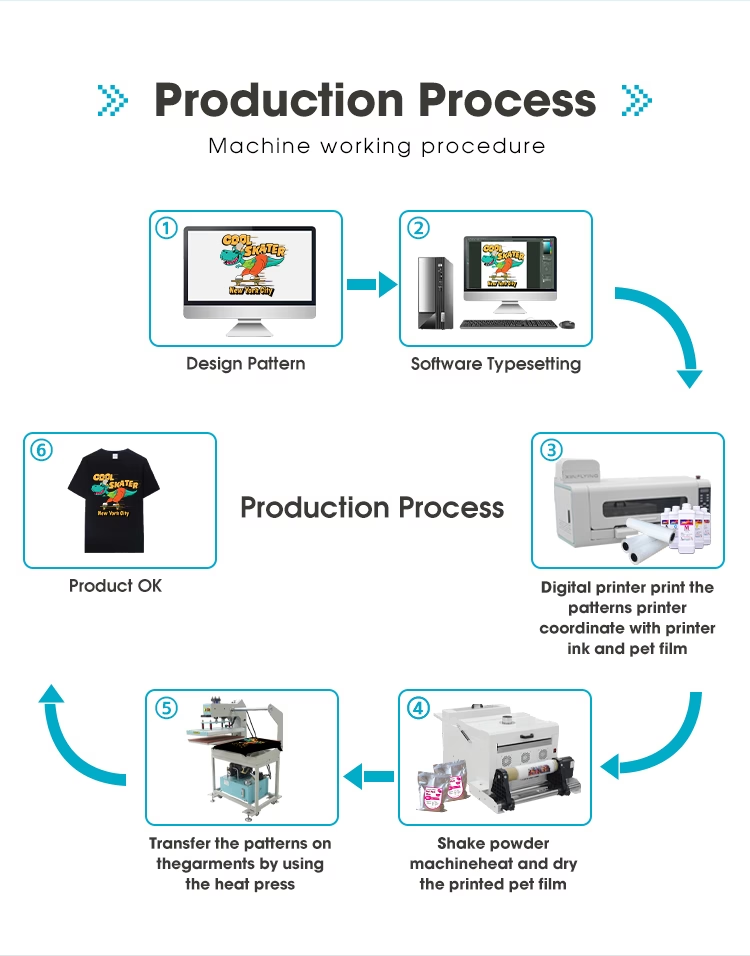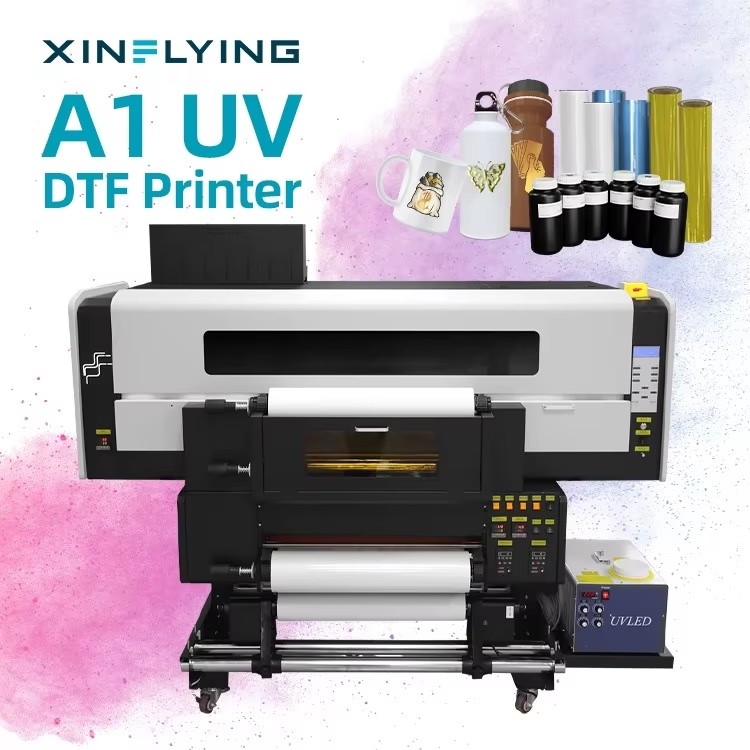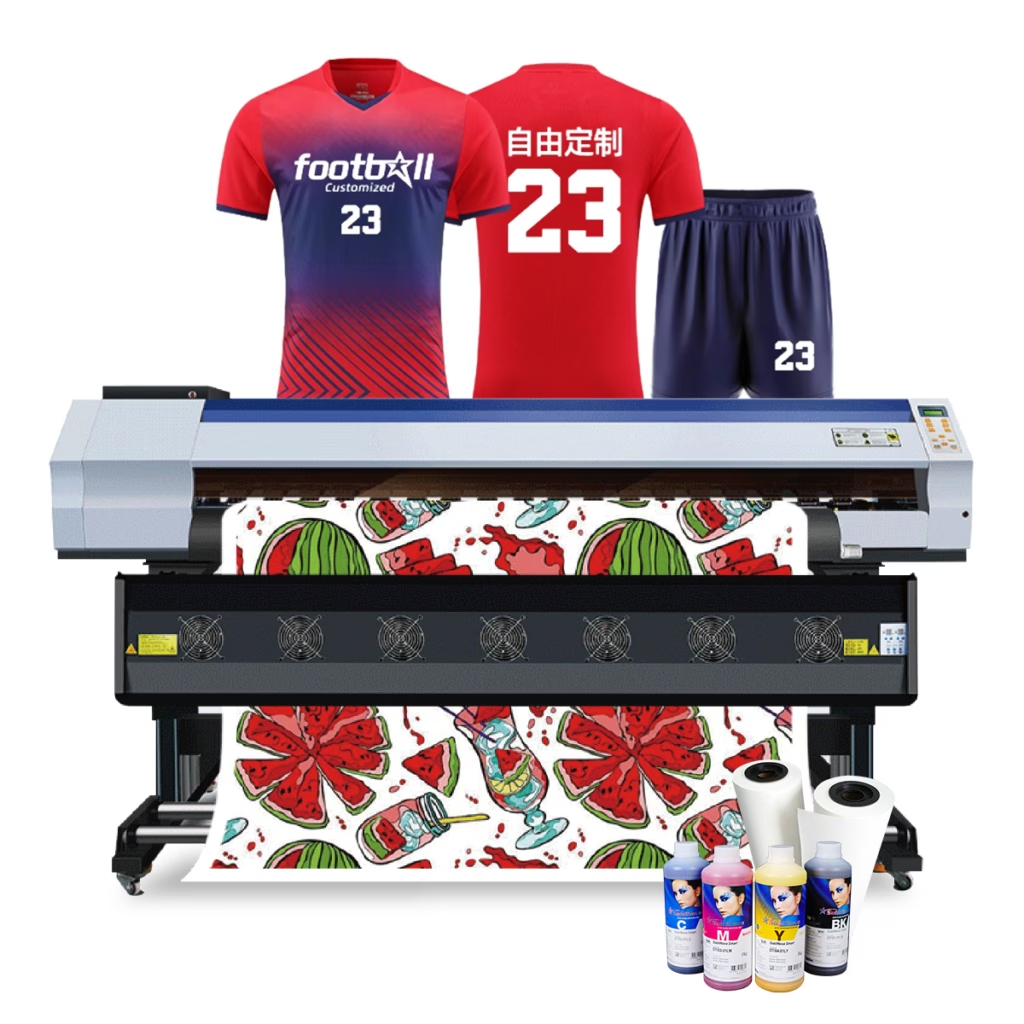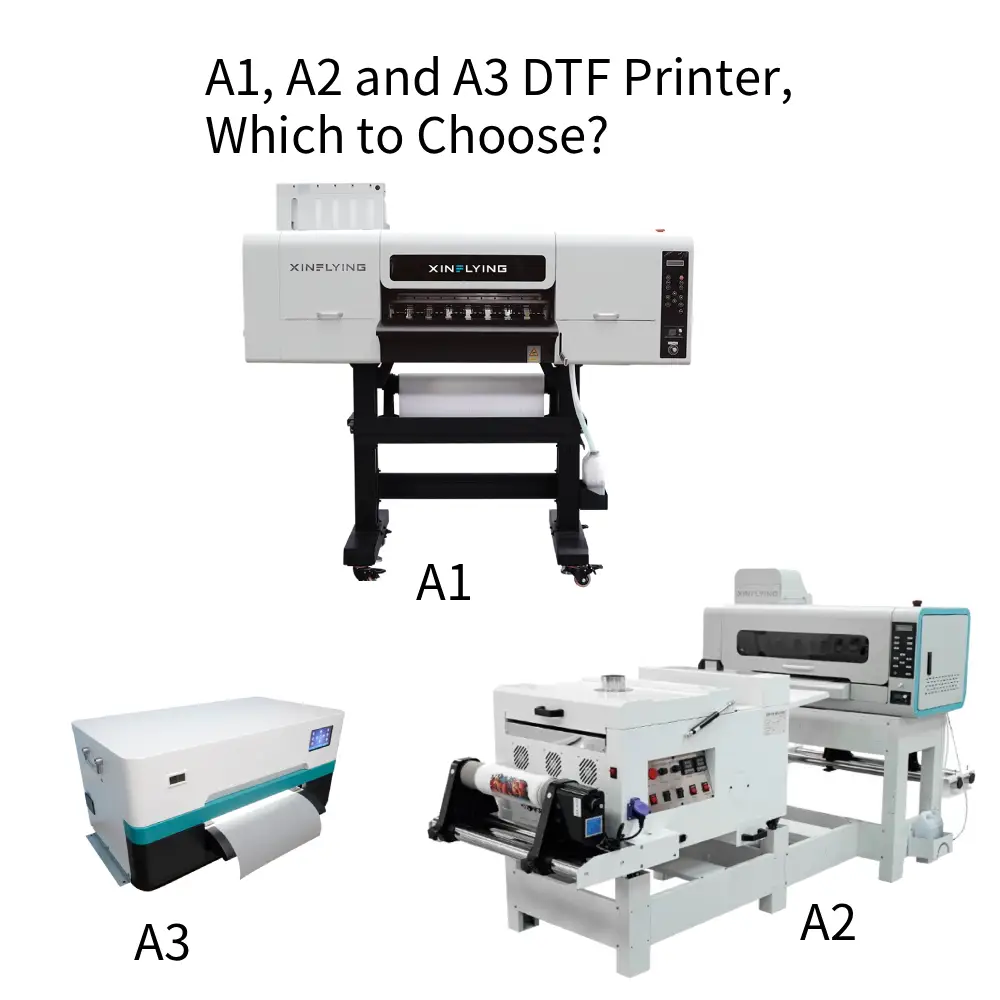ファブリックプリントは、長年にわたって劇的に進化したアートです, デザインに命を吹き込むためのさまざまなテクニックを提供します. カスタム T シャツを作成する場合でも、, ファッション用の生地をデザインする, 販促品の制作や, あなたが選択したテキスタイルプリント技術は、最終製品に大きな違いをもたらす可能性があります. このガイドでは以下について詳しく説明します 6 生地のプリント技術の種類, 彼らのプロセスを探る, アプリケーション, 長所, ニーズに最適な方法を選択するのに役立つ短所と短所.
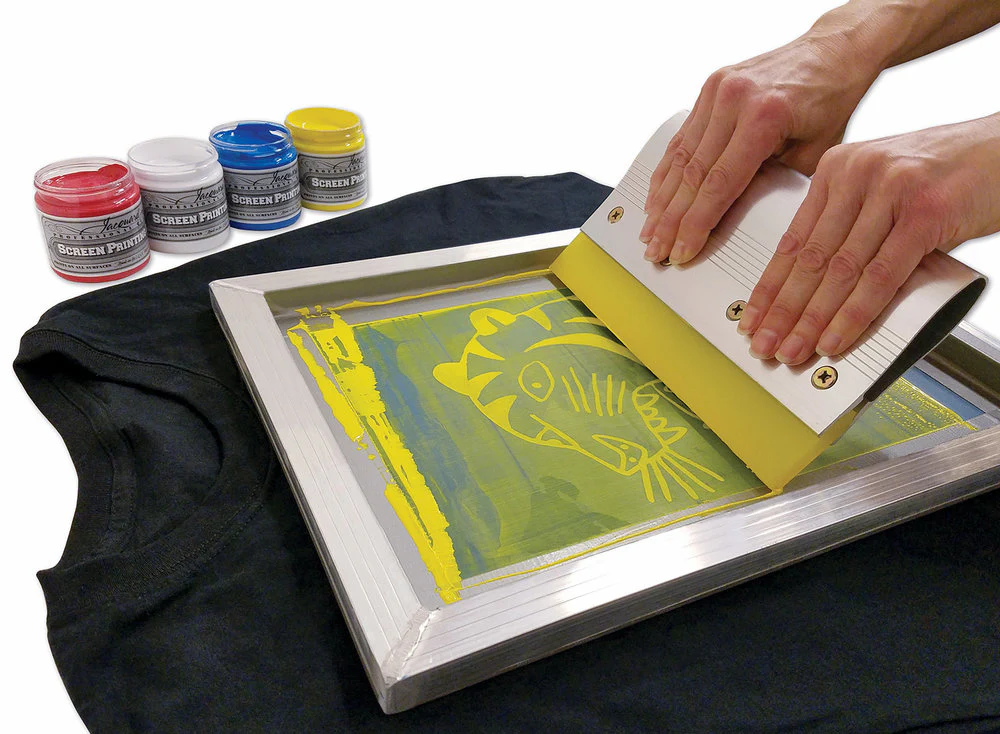
スクリーン印刷
スクリーン印刷 最も古く、最も広く使用されている布地プリント技術の 1 つです。. ステンシルの作成が含まれます (または画面) そしてそれを使用して印刷面にインクの層を塗布します.
プロセス
プロセスは、細かいメッシュのスクリーン上でステンシルを作成することから始まります。. 次に、スキージを使用してインクをメッシュを通して布地に押し出します。. デザインの各色には個別のスクリーンとインク層が必要です, シンプルなものに適しています, 大胆なデザイン.
アプリケーション
スクリーン印刷は大量注文に最適で、T シャツによく使用されます。, トートバッグ, とポスター. 特にファッション業界やプロモーション業界で人気があります.
長所
- 耐久性: 繰り返しの洗濯にも耐えられる長持ちするプリントを実現.
- 鮮やかな色: 豊富な特典, ポップな鮮やかなカラー.
- 費用対効果が高い: 大規模なバッチに経済的.
短所
- セットアップ時間: かなりのセットアップ時間が必要, 少量の注文では効率が低下する.
- 限定された詳細: 複雑なディテールや多くの色を含むデザインには適していません.
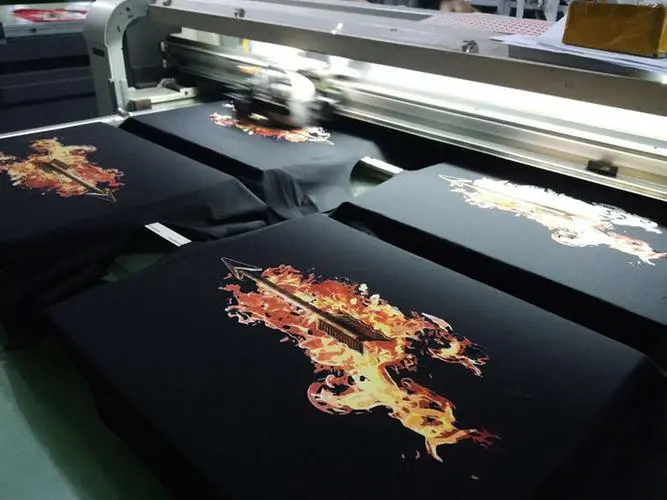
衣服に直接 (DTG) 印刷
DTG印刷 インクジェット技術を使用してデザインを生地に直接印刷します. 衣服用の巨大なインクジェット プリンターと考えてください。.
プロセス
生地が DTG プリンターにロードされます, インクが表面に直接塗布される場合. インクが繊維に染み込みます, 柔らかく耐久性のあるプリントを作成する. この方法は、詳細なデザインや多色のデザインに最適です.
アプリケーション
小規模から中規模の注文に最適, DTG プリントはカスタム T シャツに広く使用されています, 特に複雑でカラフルなデザインのもの.
長所
- ディテールとカラー: 幅広い色スペクトルを持つ高解像度の画像を印刷可能.
- セットアップ費用なし: 小ロットやカスタムオーダーに最適.
- ソフトフィニッシュ: 柔らかな手触りのプリントを実現します.
短所
- 料金: 大量注文の場合、単位あたりのコストが高くなります.
- 速度が遅い: スクリーン印刷と比較して生産時間が遅い.

フィルムにダイレクト (DTF) 印刷
さまざまな種類の生地プリント技術の中から, DTF印刷 その多用途性により際立っています. DTF印刷とは、デザインを特殊なフィルムに印刷することです。, 熱と接着パウダーを使って生地に転写します。.
プロセス
特殊なDTFプリンターを使用してPETフィルムにデザインを印刷します。. 印刷したフィルムに粘着パウダーをコーティング, 溶けた, ヒートプレスを使用して生地に転写します.
アプリケーション
DTF印刷は多彩な用途に対応, さまざまな生地に適しています, 綿を含む, ポリエステル, そしてブレンドする. カスタムアパレルや販促品によく使用されます.
長所
- 多用途性: 幅広い素材に印刷可能.
- 詳細: 細かいデザインや多色デザインにも対応.
- 耐久性: ひび割れや色あせに強い耐久性のあるプリントを作成します。.
短所
- 複雑: 複数のステップと正確な制御が必要.
- 料金: 初期設定と材料費がかかる場合がある.
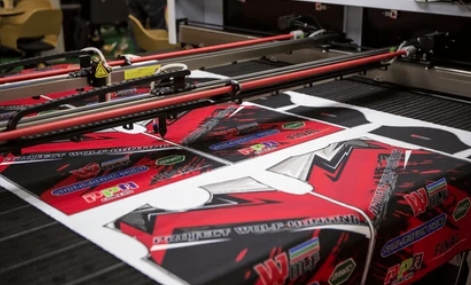
昇華印刷
昇華印刷 熱を利用して染料を生地に転写します, 鮮やかで永続的なデザインが得られます.
プロセス
デザインは昇華インクを使用して特殊な昇華紙に印刷されます。. 熱と圧力を加えて染料を紙から布地に転写します。, 分子レベルで結合する場所.
アプリケーション
ポリエステルおよびポリマーコーティングされた生地に最適, 昇華プリントはスポーツウェアによく使用されます, フラグ, カスタムプロモーションアイテムなど.
長所
- 鮮やかな色: 明るく演出します, 活気のある, そして永久的な色.
- 全面印刷: フルカバープリントに最適.
- 耐久性: デザインは耐久性があり、ひび割れません, 皮をむく, またはフェード.
短所
- ファブリックの制限: ポリエステルまたはポリマーコーティングされた表面に限定される.
- 料金: 特殊な素材のため高価になる可能性がある.
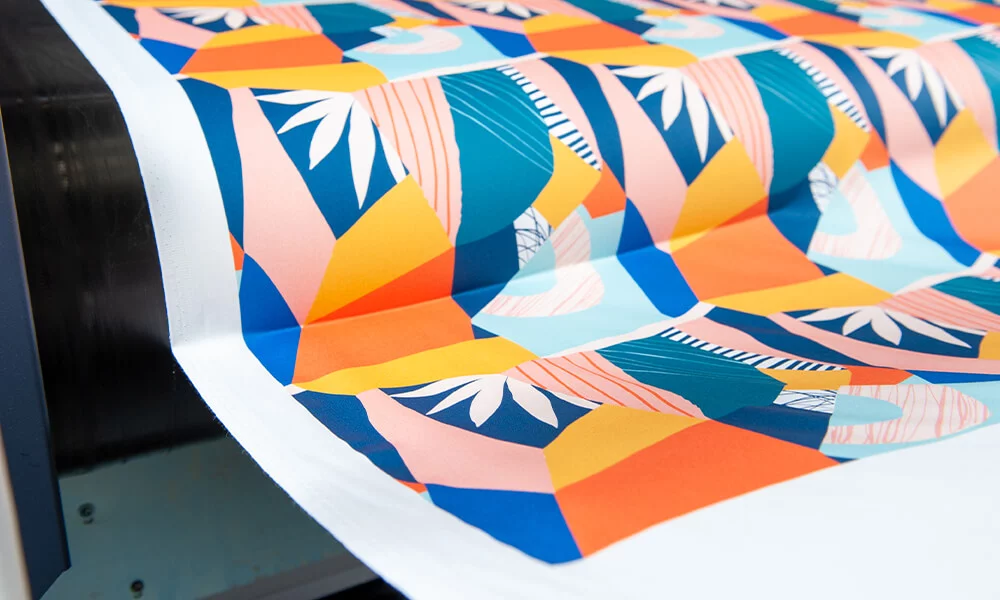
顔料印刷
顔料プリントでは、生地の繊維の上に顔料インクを塗布します。, 浸み込むのではなく.
プロセス
デザインは顔料インクを備えたプリンターを使用して生地に直接印刷されます。. 印刷後, 通常、生地は顔料を固定するためにヒートセットされます。.
アプリケーション
天然繊維と合成繊維の両方に最適, 顔料プリントはファッションで使用されています, ホームテキスタイル, そしてカスタムアパレル.
長所
- 多用途性: 幅広い生地に適しています.
- 色堅牢度: 優れた色堅牢度と洗濯耐久性を備えています。.
- 詳細: 細かい部分も鮮やかな色で印刷可能.
短所
- テクスチャ: プリントは生地の表面が硬く感じられる場合があります.
- 色褪せ: 適切に固定しないと、他の方法よりも早く色が褪色する可能性があります.
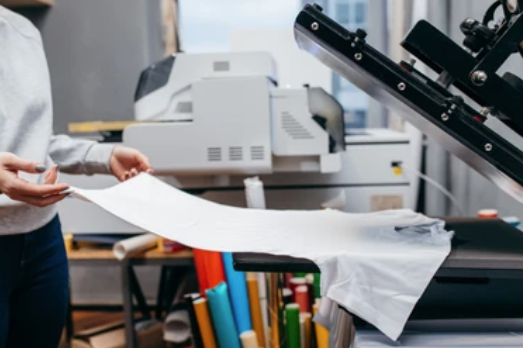
熱転写ビニール (HTV) 印刷
HTV の印刷では、ビニールシートからデザインを切り取り、生地に熱圧着します。.
プロセス
ビニールシートからプロッターやカッターを使ってデザインを切り出します。. カットされたビニールは余分な素材を取り除くために取り除かれ、生地に熱圧着されます。.
アプリケーション
スポーツウェアによく使われる, カスタムTシャツ, およびプロモーションアイテム, HTV 印刷は汎用性が高く、一回限りのデザインや少量生産に人気があります。.
長所
- 耐久性: 耐久性があり、洗えるプリントを生成します。.
- 多用途性: さまざまな色と仕上げをご用意しています, メタリックやグリッターを含む.
- 使いやすさ: 大掛かりなセットアップを必要としないシンプルなプロセス.
短所
- テクスチャ: ビニールプリントは重くて硬いと感じる場合があります.
- 限定された詳細: 非常に詳細なデザインや多色のデザインには適していません.
どの印刷方法を選択する必要がありますか?
適切な生地の印刷方法の選択は、特定のニーズに応じて異なります. 生地の種類を考慮する, 設計の複雑さ, 注文サイズ, そして予算.
スクリーン印刷 シンプルなデザインで大量のバッチに最適です, その間 DTG 詳細でカラフルなカスタムプリントに最適です. DTF さまざまな生地で多用途性を提供します, 昇華によりポリエステルに鮮やかな色が生まれます。, 顔料印刷 さまざまな素材に適しています, そして HTV 耐久性に優れています, カスタムプリント.
結論
ファブリックプリントの世界をナビゲートするのは大変なことです, しかし、生地に印刷するさまざまな方法の長所と短所を理解することで、プロジェクトに最適な選択を導き出すことができます。. 活気を求めている場合でも、, 耐久性のあるプリントや大量注文向けのコスト効率の高いソリューション, あなたのニーズに合った印刷技術があります. 生地の種類を考慮する, デザインの詳細, 創造的なビジョンを実現するための情報に基づいた意思決定を行うための生産量.
よくある質問
1. 最も耐久性のある生地の印刷方法は何ですか??
耐久性に優れたスクリーン印刷と昇華印刷, 大きな色あせやひび割れもなく、複数回の洗濯に耐えます。.
2. あらゆる生地に DTF 印刷を使用できますか??
DTF 印刷は汎用性が高く、幅広い生地に使用できます。, 綿を含む, ポリエステル, そしてブレンドする.
3. 複雑な印刷に最適な印刷方法は何ですか, マルチカラーのデザイン?
DTG 印刷は、詳細な多色デザインに最適です, 高解像度と鮮やかな色を実現.
4. 昇華プリントは特定の生地に限定されますか?
はい, 昇華プリントは、染料を素材に浸透させるために接着プロセスが必要となるため、ポリエステルやポリマーでコーティングされた生地に最適です。.
5. ファブリックプリントのセットアップ時間を短縮するにはどうすればよいですか?
DTG や HTV 印刷などの方法は、スクリーン印刷に比べてセットアップ時間が最小限で済みます。, 少量の注文や迅速な対応をより効率的に行うことができます.

